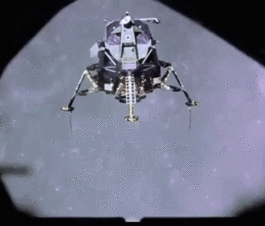Artemis mission: Difference between revisions
No edit summary |
No edit summary |
||
| Line 7: | Line 7: | ||
| image_size = 265px | | image_size = 265px | ||
| mission_type = Crewed lunar landing | | mission_type = Crewed lunar landing | ||
| operator = [[Natkosma]]<br>[ | | operator = [[Natkosma]]<br>[[Estmerish National Space Centre|ENSC]]<br>[gaullica]<br>[valduvia]<br>[werania] | ||
| Harvard_designation = <!--spacecraft launched 1962 and earlier only (eg. 1957 Alpha 2)--> | | Harvard_designation = <!--spacecraft launched 1962 and earlier only (eg. 1957 Alpha 2)--> | ||
| COSPAR_ID = CSM: 1975-017A<br>LM: 1975-017D | | COSPAR_ID = CSM: 1975-017A<br>LM: 1975-017D | ||
Latest revision as of 14:09, 24 September 2023
This article is incomplete because it is pending further input from participants, or it is a work-in-progress by one author. Please comment on this article's talk page to share your input, comments and questions. Note: To contribute to this article, you may need to seek help from the author(s) of this page. |
 The lunar lander Lancea detaches from the command module Novus-4 to carry its crew to the lunar surface. | |
| Mission type | Crewed lunar landing |
|---|---|
| Operator | Natkosma ENSC [gaullica] [valduvia] [werania] |
| COSPAR ID | CSM: 1975-017A LM: 1975-017D |
| SATCAT no. | 9617 |
| Mission duration | 8 days, 23 hours, 36 minutes, 46 seconds[1] |
| Spacecraft properties | |
| Spacecraft | Novus-4: Sichka CA-17 Lancea: Marite II Aquila: Redoubt A4 |
| Manufacturer | Novus-4: MPzVP / Natkosma[2] Lancea: Rietbaznīca 17 Aquila: Mullins-Douard[3] |
| Launch mass | 55,172 kg (121,633 lbs)[1][2] |
| Landing mass | 7,710 kg (16,998 lbs)[1] |
| Crew | |
| Crew size | 5 |
| Members | Template:Country data Estmere Kevin Thornton |
| EVAs | 4 on lunar surface |
| Start of mission | |
| Launch date | June 18, 1975, 07:18:00 UTC[1] |
| Rocket | Aquila (Redoubt A4) |
| Launch site | Myensk Cosmodrome[1] |
| End of mission | |
| Recovered by | Soravian frigate Volodymorya |
| Landing date | June 27, 1975, 05:34:19 UTC[1] |
| Landing site | Lumine Ocean |
The Artemis mission was the name of the collaborative crewed lunar landing mission between Soravia, Estmere, Gaullica, Valduvia and Werania that put the first humans on the moon between June 18 and June 27, 1975. Cosmonauts Viktor Matvyenko, Kevin Thornton, Jean-Claude Darche, and Auseklis Landmanis successfully completed a spacewalk on the lunar surface, conducting various scientific activities, while Jörn Scheiner piloted the command module Novus-4 in selenocentric orbit for the duration of the mission. The name was chosen after Artemis, the ancient Piraean god of the wilderness.
Attempts to carry out a successful crewed lunar landing were first designed by Soravia's Natkosma, whose series of Horyzont missions attempted to test the feasibility of safely landing a crewed spacecraft on the lunar surface. Discussions on a collaborative mission coincided with an era of détente between the east, west and north. Plans were agreed in Samistopol in 1970 between Soravia, Estmere and Werania[4], but Gaullica and Valduvia joined the project later in 1971.[5] The launch location in Kingsport was chosen in 1973 for its relative proximity to the equator.
The mission was globally televised to hundreds of millions[6], with Matvyenko exiting Lancea first and thus becoming the first man on the moon.[7] The participating cosmonauts collected various samples of lunar soil and conducted various experiments on the surface. The crew left the lunar surface after just under nine days, and splashed down in the Lumine Ocean on the morning of June 27. The Soravian frigate Volodymorya transported the crew back to Samistopol where the mission control was located.
Artemis has since been hailed as the pinnacle of human cooperation, and has often been cited as one of the greatest feats in human history.[8][9][10] Soravian president Aleksander Shelyapin referred to it as "humanity's proudest moment", while Estmerish prime minister Peter Morrison hailed a "new era of co-operation and internationalism".
Background
Mission chronology
Aftermath
References
- ↑ 1.0 1.1 1.2 1.3 1.4 1.5 "Artémis: Aperçu de la mission 1975". l'Agence spatiale eucléene. 16 February 1998. Retrieved 28 July 2023.
- ↑ 2.0 2.1 "Місія Артеміда". natkosma.sr. 18 June 2017. Retrived 28 July 2023.
- ↑ "Der Estmerische Mullins-Douard baut eine Mondrakete". Wöchentliche Technik. 8 December 1971. Retrieved 28 July 2023.
- ↑ "Morwall agrees on historic manned lunar mission with Westbrücken and Samistopol". The Standard. 10 October 1970. Retrieved 28 July 2023.
- ↑ "Gaullica and Valduvia to join manned lunar mission". The Standard. 3 March 1971. Retrieved 28 July 2023.
- ↑ "Mennesket erobrer kosmos live på tv til hundreder af millioner". DM. 18 June 1975. Retrieved 28 July 2023.
- ↑ "Зорав'ян Матвієнко став першою людиною на Місяці". Samistopolitan. 18 June 1975. Retrieved 28 July 2023.
- ↑ "DM's største øjeblikke i det 20. århundrede". DM. 29 December 1999. Retrieved 28 July 2023.
- ↑ "Panorama reflects on the 20th-century". Panorama 7 January 2000. Retrieved 28 July 2023.
- ↑ ""Artémis" en tête des sondages pour la plus grande réalisation de l'histoire de l'humanité". Le Monde. 6 November 2011. Retrieved 28 July 2023.